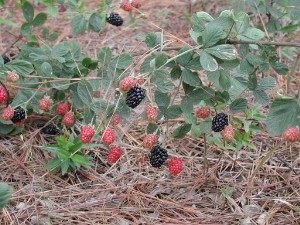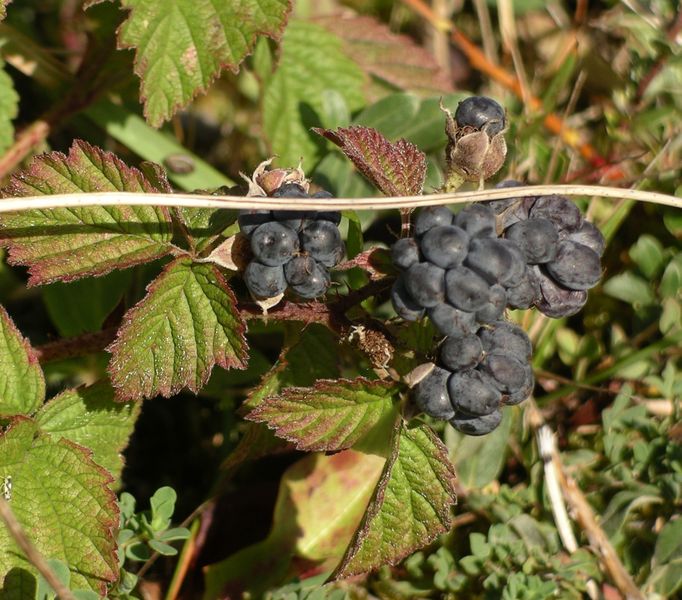DewberriesThe Dewberries (Rubus sect. Eubatus) are a group of species closely related to the blackberries. They are small brambles with berries reminiscent of the raspberry, but are usually purple to black instead of red. Dewberries are common throughout most of the Northern Hemisphere, sometimes thought of as a nuisance weed, but the leaves can be used for a tea, and the berries are sweet and edible. They can be eaten raw, or used to make cobbler or jam. Around March and April, the plants start to grow white flowers that develop into small green berries. The tiny green berries grow red and then a deep purple-blue as they ripen. When the berries are ripe, they are tender and difficult to pick in any quantity without squashing them. The plants do not have upright canes like some other Rubus species, but have stems that trail along the ground, putting forth new roots along the length of the stem. The stems are covered with fine spines or stickers. Anyone picking these wild berries can expect to have their hands stained purple and to have many scratches from the stickers, but the taste of the sweet berries is worth the trouble. In the winter the leaves often remain on the stems, but may turn dark red. The leaves are sometimes eaten by the larvae of some Lepidoptera species including Peach Blossom. The European dewberry, Rubus caesius, grows more upright like other brambles but is frequently restricted to coastal communities especially sand dune systems. Its fruits are a deep, almost black, purple and are coated with a thin layer or 'dew' of waxy droplets. Thus, they appear sky-blue (caesius is Latin for pale blue). It is less sought after, because its fruits are small and retain a markedly tart taste even when fully ripe. From Wikipedia, the free encyclopedia
|
|

